
Miles Davis, Volumes 1 & 2 are a pair of separate but related albums by American jazz trumpeter Miles Davis recorded on May 9, 1952, April 20, 1953 and March 6, 1954 and released on Blue Note early 1956. The three sessions were originally released on ten-inch LPs as Young Man with a Horn (1953), Miles Davis, Vol. 2 (1953) and Miles Davis, Vol. 3 (1954), respectively.

A Night at Birdland, Vols. 1–3 are three separate but related 10" LPs by the Art Blakey Quintet recorded live at the Birdland jazz club on February 21, 1954, and released on Blue Note later that year, in July, October and November respectively. The quintet features horn section Clifford Brown and Lou Donaldson and rhythm section Horace Silver, Curly Russell and Blakey.
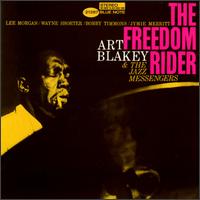
The Freedom Rider is an album by jazz drummer Art Blakey and his group the Jazz Messengers, recorded in 1961 and released in 1964 by Blue Note Records. Continuing Blakey's distinct brand of hard bop, this album features compositions from Wayne Shorter, Lee Morgan, Blakey himself, and Kenny Dorham, a former Jazz Messenger. This was the final album by this particular edition of the Jazz Messengers, who had been together for 18 months, as Lee Morgan left after this album and was replaced by Freddie Hubbard.

Genius of Modern Music, Vols. One & Two are a pair of separate but related 12" compilation albums (LPs) by American jazz pianist Thelonious Monk released on Blue Note in 1956. Later re-issues on CD include more material recorded at the same sessions but not released on the original LPs.

Conception is a compilation album issued by Prestige Records in 1956 as PRLP 7013, featuring Miles Davis on a number of tracks. The album, compiled from earlier 10 inch LPs, or as 78rpm singles, also features musicians such as Lee Konitz, Sonny Rollins, Stan Getz, Gerry Mulligan, and Zoot Sims. The cover was designed by Bob Parent. In particular, the entirety of the 10"LP Lee Konitz: The New Sounds makes up all of side 1.
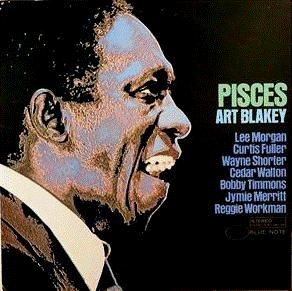
Pisces is a jazz album by Art Blakey & the Jazz Messengers. It was recorded between 1961 and 1964, but not issued on Blue Note Records until 1979. More a compilation than an album, all the tracks, except for "It's A Long Way Down", may be found on the Mosaic compilation The Complete Blue Note Recordings of Art Blakey's 1960 Jazz Messengers. Moreover, "Uptight", and "Pisces" are included on the CD reissue of The Freedom Rider, whilst "It's a Long Way Down" is featured on the CD reissue of Indestructible. Ultimately, "United" and "Ping Pong" may be found on Roots & Herbs.
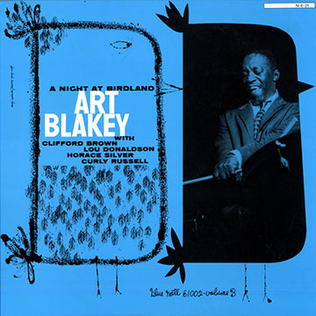
A Night at Birdland, Vol. 3 is a 12" live album containing outtakes from A Night at Birdland, Vols. 1–3, released in 1984 by Toshiba Records in Japan.

Horace Silver and the Jazz Messengers is an album by Horace Silver and the Jazz Messengers compiling two 1955 10" LPs—Horace Silver Quintet, Vol. 3 and Horace Silver Quintet, Vol. 4 —recorded on November 13, 1954 and February 6, 1955 respectively and released on Blue Note in October 1956—Silver’s debut 12". The quintet features horn section Hank Mobley and Kenny Dorham and rhythm section Doug Watkins and Art Blakey.

The Complete Blue Note Recordings of Thelonious Monk is a box set by American jazz pianist Thelonious Monk compiling his recordings for Blue Note first released as a limited four-LP box set on Mosaic Records in 1983 before being issued as a four-CD box set by Blue Note for the first time in 1994 as The Complete Blue Note Recordings.
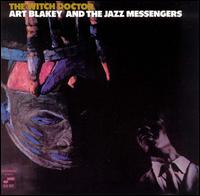
The Witch Doctor is an album by American jazz drummer and bandleader Art Blakey and his group The Jazz Messengers, recorded on March 14, 1961 and released in 1967 by Blue Note Records. It features performances by Blakey with Lee Morgan, Wayne Shorter, Bobby Timmons, and Jymie Merritt.

The Amazing Bud Powell, Vol. 2 is a ten-inch LP by American jazz pianist Bud Powell recorded at WOR Studios in New York on August 14, 1953 and released on Blue Note the following year. Powell is backed by rhythm section George Duvivier and Art Taylor.
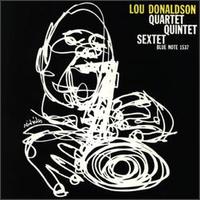
Quartet/Quintet/Sextet is an album by American jazz saxophonist Lou Donaldson recorded on June 20 and November 19, 1952 and August 22, 1954 and released on Blue Note in 1957. The quartet features rhythm section Horace Silver, Gene Ramey and Art Taylor; the quintet adds trumpeter Blue Mitchell. The sextet features a new lineup, with brass section Kenny Dorham and Matthew Gee and rhythm section Elmo Hope, Percy Heath and Art Blakey.

Afro-Cuban is an album by American jazz trumpeter Kenny Dorham, recorded for Blue Note on March 29, 1955 and released later that year on the Blue Note Modern Jazz Series, shortly before the label discontinued the format. It was soon reissued on the new 1500 series, recompiled with a session by an early incarnation of the ensemble, with new cover art.

At the Jazz Corner of the World, Vols. 1 & 2 are a pair of separate but related live albums by Art Blakey and the Jazz Messengers, recorded at the Birdland jazz club in New York City on April 15, 1959 and released on Blue Note later that year in September and October respectively. The quintet features horn section Lee Morgan and Hank Mobley and rhythm section Bobby Timmons, Jymie Merritt and Art Blakey.

Buttercorn Lady is a live album by drummer Art Blakey's New Jazz Messengers recorded at The Lighthouse jazz club in 1966 and originally released that year on the Limelight label. The album was the first commercial recording to feature pianist Keith Jarrett, who had joined Blakey's band a few months earlier.

Blakey is an album by drummer Art Blakey recorded in 1954 and originally released on the EmArcy label as a 10-inch LP. The album was rereleased on CD in 1999 with bonus tracks originally released on the album Introducing Joe Gordon. The album has also been released as "The Complete Art Blakey on EmArcy", including four songs from a March 24 recording session.

Modern Jazz Trumpets is an album released by Prestige Records in 1951 with music by four jazz trumpeters: Fats Navarro, Dizzy Gillespie, Miles Davis and Kenny Dorham. The album was released on the 10" LP format and includes the first recordings by Davis for Prestige.

The Jazz Messengers were a jazz combo that existed for over thirty-five years beginning in the early 1950s as a collective, and ending when long-time leader and founding drummer Art Blakey died in 1990. Blakey led or co-led the group from the outset. "Art Blakey" and "Jazz Messengers" became synonymous over the years, though Blakey did lead non-Messenger recording sessions and played as a sideman for other groups throughout his career.
"Yes sir, I'm gonna to stay with the youngsters. When these get too old, I'm gonna get some younger ones. Keeps the mind active."

Horace Silver Trio & Art Blakey–Sabu is an album by the Horace Silver Trio featuring drummer Art Blakey and conga player Sabu, recorded on October 9 & 20, 1952 and November 23, 1953 respectively and released on Blue Note in 1956.
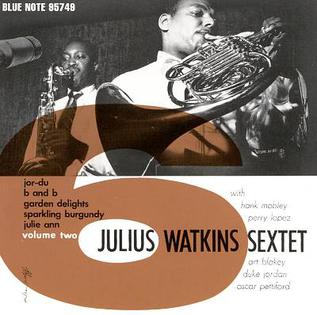
Julius Watkins Sextet is an album by the French horn player Julius Watkins featuring tracks recorded in 1954 and 1955 which were originally released as two 10 inch LPs on the Blue Note label. The original 12 inch LP (K18P-9273) was released in Japan on June 25, 1983, by King Records (Japan), who owned the Blue Note license in Japan at that time.






















